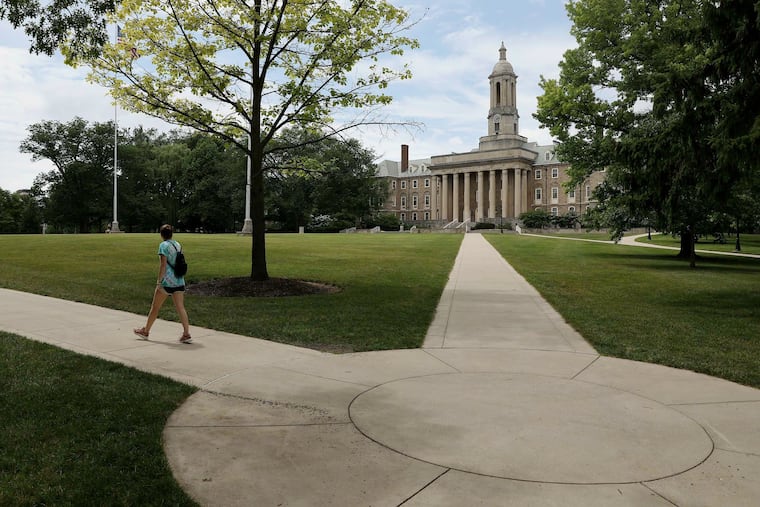Citing inflationary increases, Penn State hikes room and board costs for next year
Students will pay $424 more for room and board in 2022-23, or a total of $12,582, under a plan approved by Penn State trustees Friday. That cost is for standard double room and most common meal plan.

Citing “unprecedented inflation for food costs and utilities,” Pennsylvania State University’s board of trustees on Friday voted to increase room and board costs by 3.5% for next year.
Under the plan, students will pay $424 more annually for room and board in 2022-23, or a total of $12,582. Those rates are for a standard double room and mid-level meal plan, the most popular. The measure passed with no comment by a vote of 27-3.
John Papazoglou, Penn State associate vice president for Auxiliary and Business Services, also cited pay and benefit increases, maintenance, and operational costs for the residence life program as fueling the need for the hike.
» READ MORE: Penn State names Louisville president Neeli Bendapudi as its next leader
The increase at Penn State could be a harbinger for students at other universities, also likely impacted by inflationary costs. Penn State this year began providing need-based room and board grants to eligible students, covering up to 25% of their costs. The university said 231 students got the grants this year.
The university’s fund-raising also has been impacted by the pandemic, but officials said they still expected to exceed the school’s six-year campaign goal of $2.1 billion by April. As of Jan. 31, the university was 98% to goal. The campaign officially ends on June 30.
“We had an off year last year,” said Rich Bundy, vice president for development and alumni relations.
» READ MORE: Penn State raises tuition 2.5% for in-state students after three-year freeze
Donations fell about 25%, from $253.6 million in 2019-20 to $190.7 million in 2020-21, the heart of the pandemic. The number of donors also dropped from 122,664 to 108,756.
“A big part of that was major donors, because we couldn’t get out on the road,” said Barbara Doran, a trustee. “You’ve got to be able to get face to face.”
But this year, giving has picked up, and Bundy said the university has a very good chance of breaking the $400 million mark for the first time.
President Eric J. Barron told trustees during Friday’s meeting that 10 top donors gave $235 million toward the six-year campaign, or more than 11% of the overall amount raised. The top five corporate and foundation donors accounted for another $266.8 million.
The campaign money will be used to support student scholarships, educational programming, and research. Barron said he is particularly proud of the completion grants that help Penn State students who are nearly done with their degrees finish. He cited the case of an engineering student who was only one course short and had to leave to help his mother. With the aid, he was able to return and finish, Barron said.
“These programs work,” Barron said. “They are helping people get to the finish line.”
The university also is beginning to prepare for its next campaign to come under new president Neeli Bendapudi, who will officially take over May 10, replacing Barron. The university has hired a consultant to make recommendations on how it can improve its fund-raising.
“One of the things we’re looking at is what do we need to do to be able to raise $500 million a year,” Doran said.
In addition to rebuilding the university’s major donor pipeline, university fund-raisers hope to zero in on all of the people who are engaged with Penn State, for example, season ticket holders for football.
“Those theoretically could be important donors,” she said.
Penn State will work on better interdepartmental communications so fund-raisers have access to that information.
The university also will have to work to fill nearly 70 vacant positions on the fund-raising team’s 600-member staff. It’s not unusual for people to leave after a campaign is finished, Bundy said, and some have chosen to retire. But he said the number of vacancies is more than typical, perhaps in part due to a hiring freeze the university had in the earlier months of COVID-19.